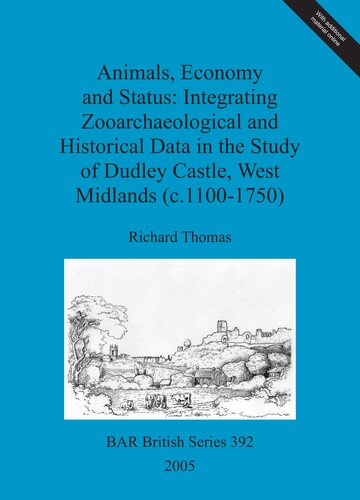

Most ebook files are in PDF format, so you can easily read them using various software such as Foxit Reader or directly on the Google Chrome browser.
Some ebook files are released by publishers in other formats such as .awz, .mobi, .epub, .fb2, etc. You may need to install specific software to read these formats on mobile/PC, such as Calibre.
Please read the tutorial at this link: https://ebookbell.com/faq
We offer FREE conversion to the popular formats you request; however, this may take some time. Therefore, right after payment, please email us, and we will try to provide the service as quickly as possible.
For some exceptional file formats or broken links (if any), please refrain from opening any disputes. Instead, email us first, and we will try to assist within a maximum of 6 hours.
EbookBell Team

4.0
36 reviewsThis volume charts the changing human-animal relationship at one particular location, Dudley Castle, West Midlands, over several centuries. The temporal span considered (the 11th-18th centuries) is, arguably, one of the most formative in the evolving relationship between humans and animals. The period was one of profound economic, social and demographic change, witnessing not only the evolution of modern breeds of domestic animals, but also a change in the way animals were perceived and treated. In this study, the animal bones recovered from archaeological excavations at Dudley Castle have been integrated with historical documentation to provide a basis from which to explore these issues. The size of the faunal assemblage, its chronology and location, combine to make the results of this analysis invaluable in enhancing our current state of knowledge. Just as human-animal relationships in the period reflected a combination of economic, social and cultural values, so the questions addressed in this volume reflect this diversity and inter-connectivity at a number of different scales. Thus, site-specific questions, as well as broader trends within the social and economic landscape of the medieval and post-medieval periods in England are considered. This study also attempts to explore dietary patterns on site, and the way in which the acquisition and consumption of food was used in the negotiation of social relationships.